Malaysian Borneo
Malaysian Borneo
The Malaysian provinces of Sabah and Sarawak, located in the northern part of Borneo, offer a unique experience different from mainland Malaysia. These areas are known for their dense rainforests, traditional Dayak villages, and winding rivers that promise great adventures. You can visit orangutan centers and see the efforts to protect these amazing animals and their habitats.
In Sabah, you can trek up Mount Kinabalu, one of the highest mountains in Southeast Asia, for stunning views. Sarawak is famous for its Mulu Caves, a vast network of caves that are fascinating to explore. The local cultures in both provinces are rich and colorful, with lively festivals, traditional crafts, and diverse indigenous communities.
Wildlife in these regions is abundant. You might spot pygmy elephants, proboscis monkeys, and a variety of exotic birds like hornbills and kingfishers. The rainforests and rivers are teeming with life, making every trip an exciting opportunity for wildlife enthusiasts.
Both Sabah and Sarawak, like the rest of Malaysia, have beautiful beaches and great diving spots. In Sabah, Sipadan Island is renowned for its coral reefs and diverse marine life. Whether you choose the beaches of Sarawak or Sabah, you can always end your trip with some quiet and relaxing time by the sea. The clear waters and vibrant underwater world make for amazing diving and snorkeling experiences, ensuring that your visit to Malaysia combines both adventure and relaxation.
Rainforest, Dayak villages, river trips, and orangutans.
BORNEO JOURNEY INSPIRATION
Our travel network specialises in tailormade holidays. Below you’ll find some examples, with price guide, using destinations and camps/lodges which we think work well together. There are many combinations possible so this is just to give you some initial ideas.
When you are ready to explore options more fully, please do complete an enquiry form – we can then put you in touch directly with the relevant specialist partner team. In discussion with you, they will tailor an itinerary based around your interests and your budget.
 If you’ve ever dreamed of spending hours observing wildlife in its natural environment, the state of Sabah in Borneo should be at the top of your travel list. While there’s no certainty about where and when you’ll encounter wild animals, there’s a good chance you’ll be captivated by orangutans, both big and small, as they eat and play just a few meters away. This is all possible thanks to the dedicated conservation efforts of the renowned Sepilok Orangutan Sanctuary. From Sepilok, you can take a longboat down the Kinabatangan River, keeping an eye on the riverbanks for sightings of Borneo’s other iconic species, including pygmy elephants and proboscis monkeys.
If you’ve ever dreamed of spending hours observing wildlife in its natural environment, the state of Sabah in Borneo should be at the top of your travel list. While there’s no certainty about where and when you’ll encounter wild animals, there’s a good chance you’ll be captivated by orangutans, both big and small, as they eat and play just a few meters away. This is all possible thanks to the dedicated conservation efforts of the renowned Sepilok Orangutan Sanctuary. From Sepilok, you can take a longboat down the Kinabatangan River, keeping an eye on the riverbanks for sightings of Borneo’s other iconic species, including pygmy elephants and proboscis monkeys.
Explorers Against Extinction works to raise awareness as well as funds for specific conservation projects. By enquiring and booking through this site you will be supporting conservation. On behalf of all confirmed clients, Explorers Against Extinction receives a donation.
DAY 1-2: Sandakan/Sepilok
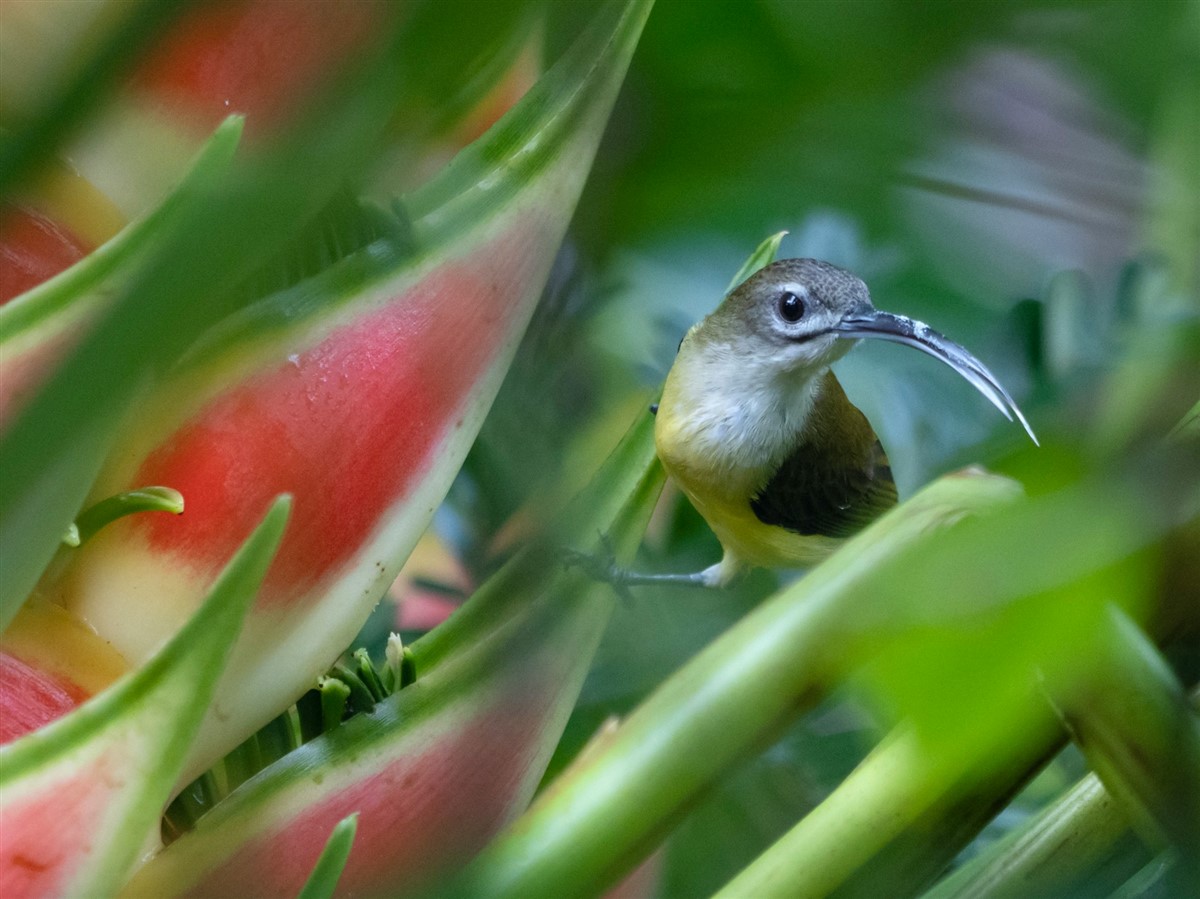 Upon arrival in Sandakan, you’ll be transferred to your lodge in Sepilok, an area known for its protected primary rainforest and mangrove ecosystems on the mainland of Borneo. Here, you can relax or explore the boardwalks surrounding your accommodation. The next day, visit the excellent Rainforest Discovery Centre (RDC), a wildlife and rainforest education project situated within the nearby Kabili Sepilok Forest Reserve, just a short walk from the lodge.
Upon arrival in Sandakan, you’ll be transferred to your lodge in Sepilok, an area known for its protected primary rainforest and mangrove ecosystems on the mainland of Borneo. Here, you can relax or explore the boardwalks surrounding your accommodation. The next day, visit the excellent Rainforest Discovery Centre (RDC), a wildlife and rainforest education project situated within the nearby Kabili Sepilok Forest Reserve, just a short walk from the lodge.
The RDC’s tropical gardens host an incredible variety of flora, including over 250 species of native and slipper orchids, pitcher plants, arid land plants, and aquatic plants, alongside other spectacular tropical species.
Don’t miss the 147-meter-long steel canopy walk, which stands 28 meters above the ground and offers stunning views of the Sepilok Rainforest, providing a chance to spot the elusive Bornean bristlehead, one of Sabah’s rarest birds. In the evening, return to the RDC to catch a glimpse of the giant red flying squirrels. Accommodation: MY Nature Resort.
DAY 3: Kinabatangan River – Abai
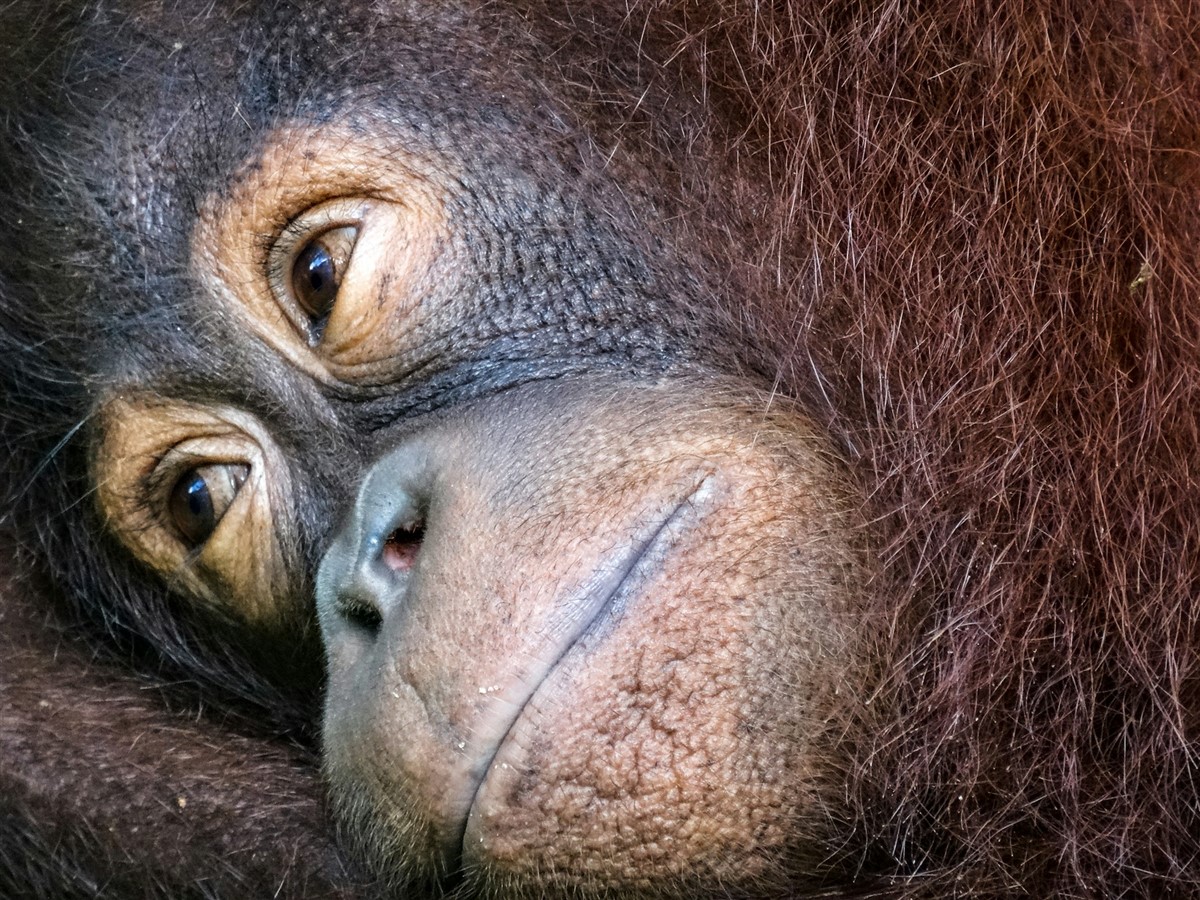 In the morning, visit the renowned Sepilok Orangutan Rehabilitation Centre to witness the feeding time of the orangutans. The center is globally recognized for its conservation efforts, rehabilitating orphaned and injured orangutans within its 19 square miles of dense rainforest. You’ll also visit the Sun Bear Conservation Centre, founded by Dr. Wong, supported by the Explorers Against Extinction initiative. Later, take a short drive to Sandakan’s jetty, where you’ll board a boat for a transfer to the Abai region along the Kinabatangan River.
In the morning, visit the renowned Sepilok Orangutan Rehabilitation Centre to witness the feeding time of the orangutans. The center is globally recognized for its conservation efforts, rehabilitating orphaned and injured orangutans within its 19 square miles of dense rainforest. You’ll also visit the Sun Bear Conservation Centre, founded by Dr. Wong, supported by the Explorers Against Extinction initiative. Later, take a short drive to Sandakan’s jetty, where you’ll board a boat for a transfer to the Abai region along the Kinabatangan River.
The Kinabatangan River, the longest in Sabah, flows through diverse habitats, including freshwater swamp forest, lowland rainforest, mangroves, and oxbow lakes, supporting a rich array of wildlife. The river’s extensive network offers quiet exploration opportunities, ideal for spotting orangutans, pygmy elephants, Sumatran rhinos, proboscis monkeys, and even the rare Borneo river shark. The Lower Kinabatangan Segama Wetlands provide a serene, less crowded experience compared to the upriver areas. Accommodations: Abai Jungle Lodge.
DAY 4: Kinabatangan River – Sukau
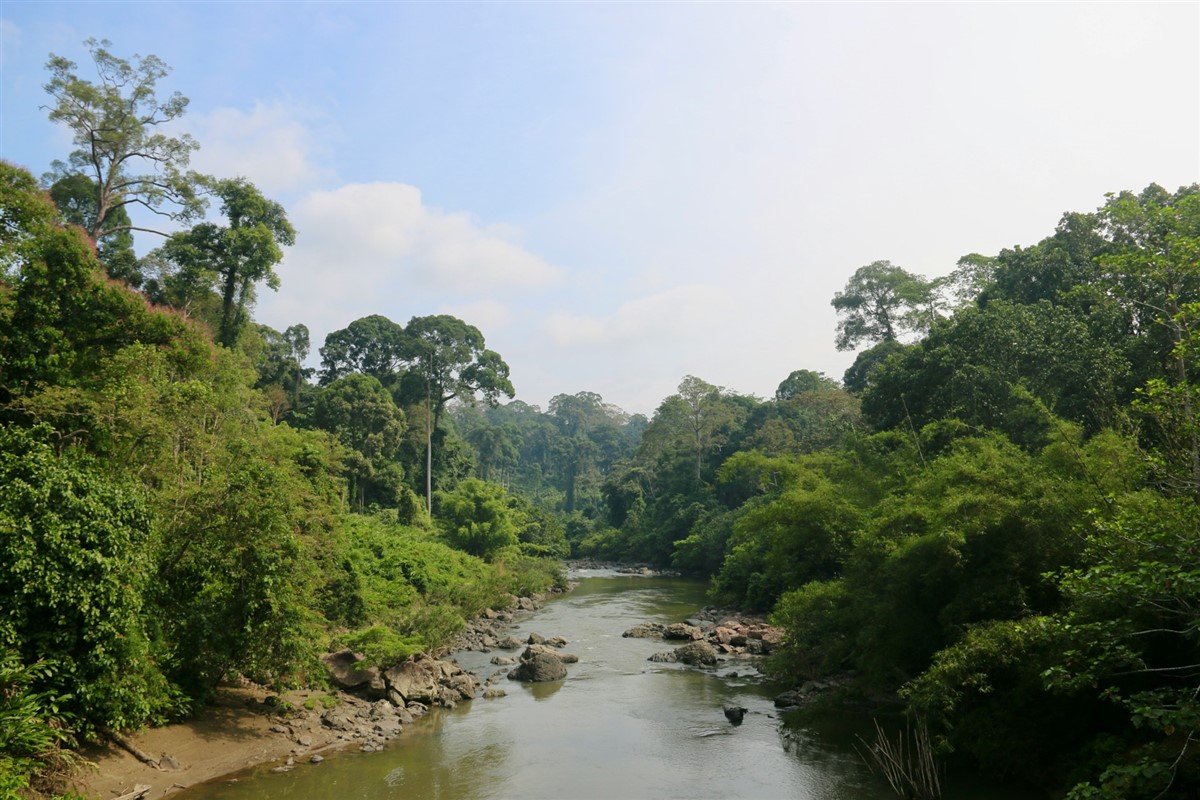 Continue your exploration of Abai’s waterways or enjoy a leisurely morning before cruising upriver to the village of Sukau. This area, although busier, is renowned for its abundant wildlife, including a dense population of Borneo pygmy elephants and the famous orangutans.
Continue your exploration of Abai’s waterways or enjoy a leisurely morning before cruising upriver to the village of Sukau. This area, although busier, is renowned for its abundant wildlife, including a dense population of Borneo pygmy elephants and the famous orangutans.
The region is also a birdwatcher’s paradise, with over 300 species, such as hornbills, kingfishers, and eagles. Throughout your stay, daily boat trips will allow you to delve deeper into the region’s rich flora and fauna. Early morning excursions are particularly rewarding for wildlife sightings.
The following morning, journey to Batu Puteh village to visit the KOPEL ecotourism cooperative. Here, you’ll meet your guide and embark on a river cruise to a tree planting site, supporting local conservation efforts. Accommodations: Kinabatangan Riverside Lodge.
DAY 5-7: Tabin Wildlife Reserve
 Depart by road to Lahad Datu, where you’ll connect with the team from Tabin Wildlife Resort and head into the heart of the Tabin Wildlife Reserve. The resort provides comfortable accommodations and easy access to Borneo’s extraordinary wildlife.
Depart by road to Lahad Datu, where you’ll connect with the team from Tabin Wildlife Resort and head into the heart of the Tabin Wildlife Reserve. The resort provides comfortable accommodations and easy access to Borneo’s extraordinary wildlife.
Participate in a variety of activities, including forest treks, nocturnal safaris, bird watching, and wildlife spotting, led by local experts. Early risers can enjoy a pre-breakfast walk to observe the diverse bird species of Tabin.
A visit to the Lipad Mud Volcano and observation tower offers a unique perspective on the wildlife and contrasting landscapes of the area. Opportunities for wild swimming are available at locations like the Lipad Waterfall.
Relax and soak in the ambiance of the rainforest during your stay. Accommodations: Tabin Wildlife Resort.
DAY 8-10: Gaya Island
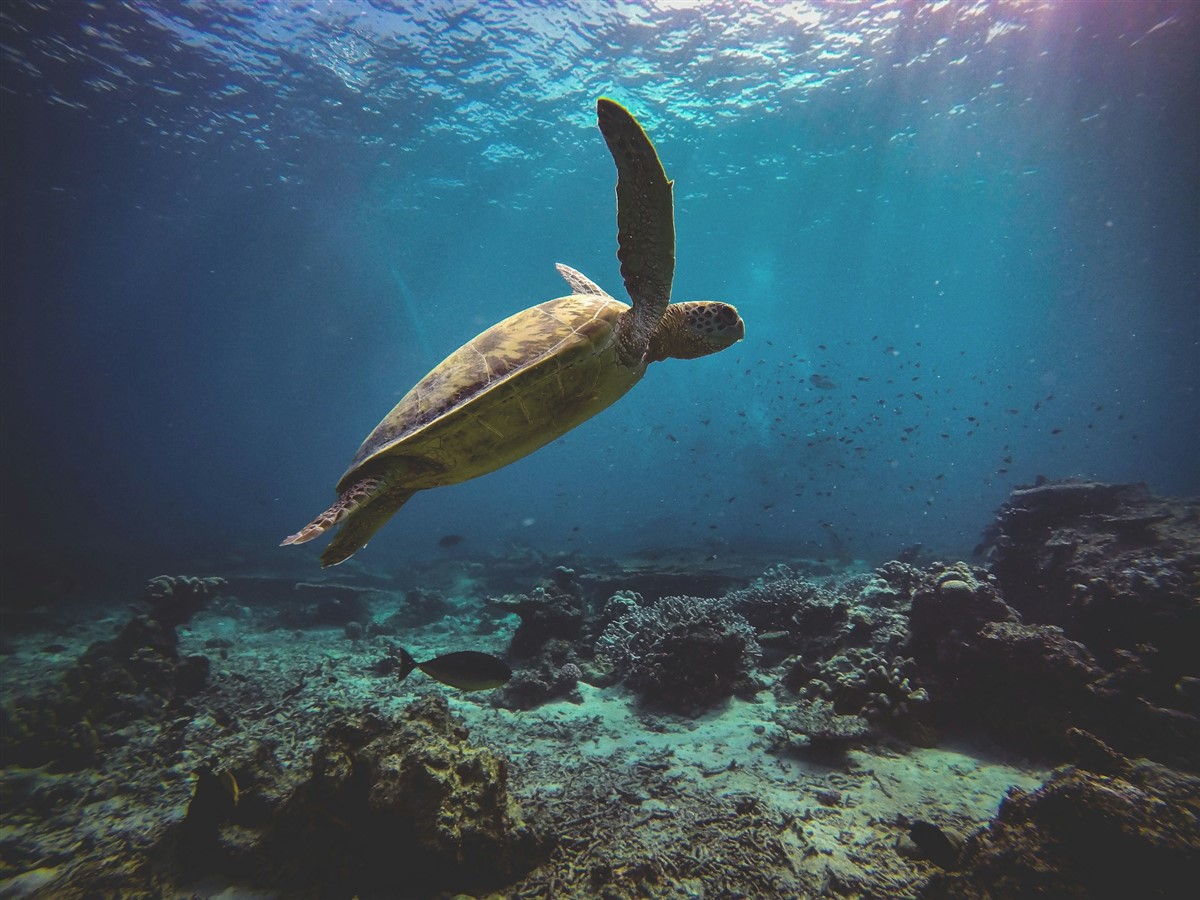 After lunch, travel back to Lahad Datu for your flight to Kota Kinabalu, followed by a boat transfer to Gaya Island.
After lunch, travel back to Lahad Datu for your flight to Kota Kinabalu, followed by a boat transfer to Gaya Island.
Located within the Tunku Abdul Rahman Marine Park, Gaya Island features some of the best beaches in Borneo and offers excellent nature trails through its tropical forests.
The marine park’s coral reefs are rich with diverse marine life, and the island’s unique ecosystem is home to various birds, mammals, and reptiles.
Enjoy a few days of leisure, exploring the island’s natural beauty at your own pace. Accommodations: Bunga Raya.
DAY 11: Departure
Conclude your journey with a shared speedboat transfer back to the mainland, where you’ll be driven to the airport for your departure.
Price Guide
- Per person sharing from £2,886
- This trip starts in Sandakan and finishes in Kota Kinabalu.
Includes
- All accommodation listed
- Transfers as listed
- All meals listed
International Flights Our partners can book International Flights for you as required.
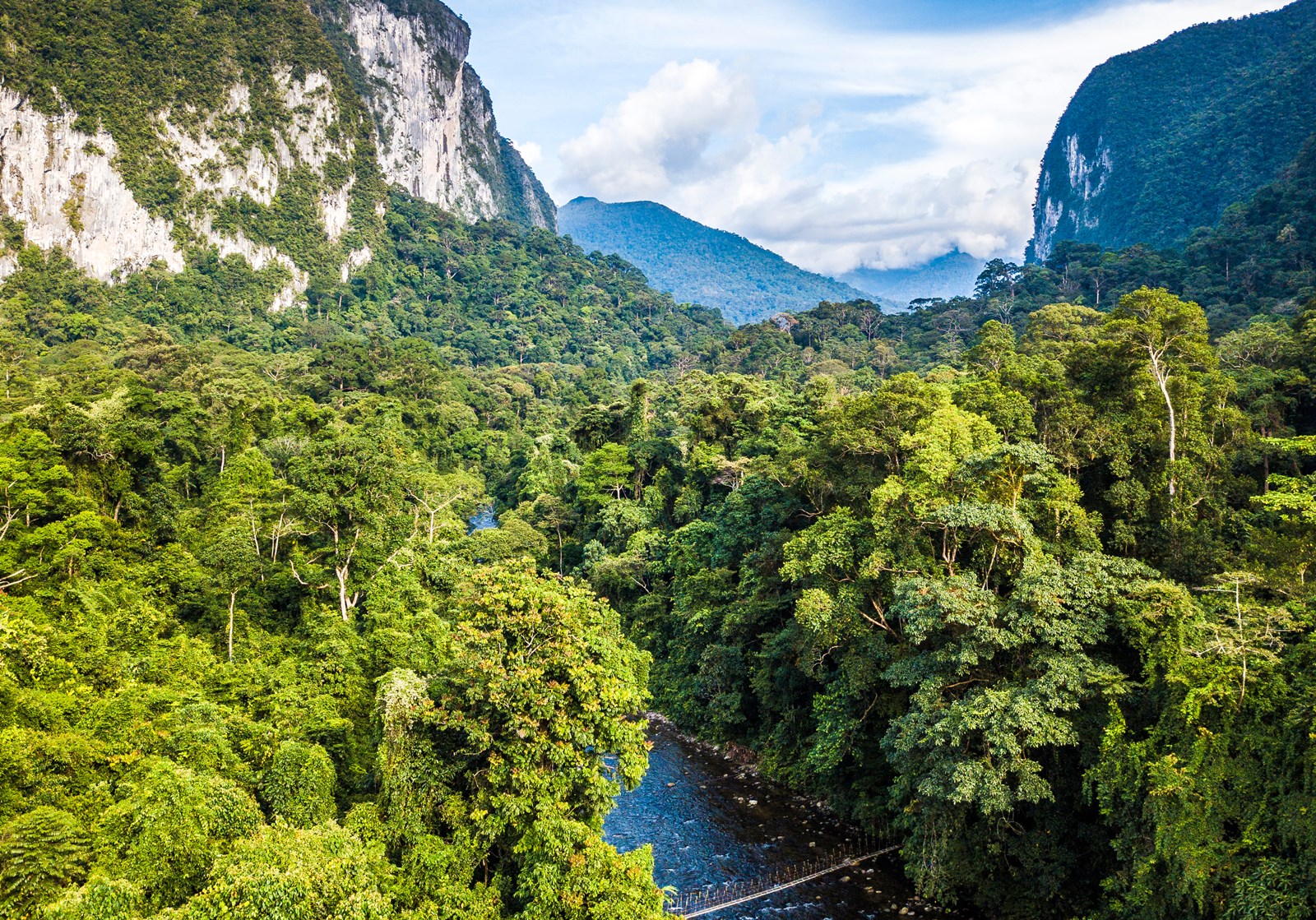 Immerse yourself in the vibrant underwater world of a biodiverse marine park, where snorkeling reveals an array of colorful marine life. Afterward, relax on the pristine beaches of tropical Gaya Island, a paradise surrounded by crystal-clear waters. In Sepilok, witness the incredible work being done to rescue and rehabilitate orangutans at the renowned sanctuary, providing a unique opportunity to see these majestic creatures up close.
Immerse yourself in the vibrant underwater world of a biodiverse marine park, where snorkeling reveals an array of colorful marine life. Afterward, relax on the pristine beaches of tropical Gaya Island, a paradise surrounded by crystal-clear waters. In Sepilok, witness the incredible work being done to rescue and rehabilitate orangutans at the renowned sanctuary, providing a unique opportunity to see these majestic creatures up close.
Delve into the depths of Danum Valley’s ancient rainforest, where the untouched beauty of nature is on full display. While exploring, keep an eye out for wild orangutans and other fascinating jungle species that inhabit this lush environment. One of the highlights of your adventure will be conquering the canopy walkway at the Borneo Rainforest Lodge, offering breathtaking views from high above the forest floor.
Finally, unwind and rejuvenate at a luxurious beachside resort, where you can bask in the sun and enjoy the serene coastal ambiance. This journey offers a perfect blend of adventure and relaxation, showcasing the incredible diversity and beauty of Borneo’s natural landscapes.
Explorers Against Extinction works to raise awareness as well as funds for specific conservation projects. By enquiring and booking through this site you will be supporting conservation. On behalf of all confirmed clients, Explorers Against Extinction receives a donation. The Borneo Sun Bear Conservation Centre, which can be visited in this region, is one of Explorers Against Extinction’s project partners.
DAY 1-2: Sepilok Orangutan Sanctuary
 Sepilok, located on mainland Borneo, is renowned for its protected primary rainforest and mangrove areas.
Sepilok, located on mainland Borneo, is renowned for its protected primary rainforest and mangrove areas.
The Sepilok Orangutan Rehabilitation Centre is world-famous for its exceptional conservation efforts, providing a safe haven for orphaned and injured orangutans within its 19 square miles of dense rainforest.
During feeding times, sightings of these magnificent creatures are almost guaranteed, but you can also keep an eye out for flashes of orange fur amidst the rich flora and fauna of the surrounding forests.
Additionally, the Sun Bear Conservation Centre and the Rainforest Rehabilitation Project, as well as the nearby Rainforest Discovery Centre (RDC) close to the Kabili-Sepilok Forest Reserve, offer engaging programs and activities to deepen your appreciation of the region’s biodiversity.
Accommodation: MY Nature Resort, Sandakan/Sepilok.
DAY 3: Kinabatangan River
 Begin your journey into the wilds of the Kinabatangan River region with a short drive to Sandakan’s jetty, where you’ll board a small boat to transfer to the Abai region. The adventure starts as the boat navigates through pristine mangrove forests, offering glimpses of wildlife along the way.
Begin your journey into the wilds of the Kinabatangan River region with a short drive to Sandakan’s jetty, where you’ll board a small boat to transfer to the Abai region. The adventure starts as the boat navigates through pristine mangrove forests, offering glimpses of wildlife along the way.
The Kinabatangan River, the longest in Sabah, is known for its dense forests that host the highest concentration of primates in northern Borneo.
Flowing through diverse habitats, including freshwater swamp forests, lowland rainforests, mangroves, and oxbow lakes, the river’s extensive network allows for quiet exploration and viewing of orangutans, pygmy elephants, Sumatran rhinos, proboscis monkeys, and even the rare Borneo river shark, along with hundreds of other fascinating species.
Accommodations: Abai Jungle Lodge, Kinabatangan River.
DAY 4-5: Kinabatangan River
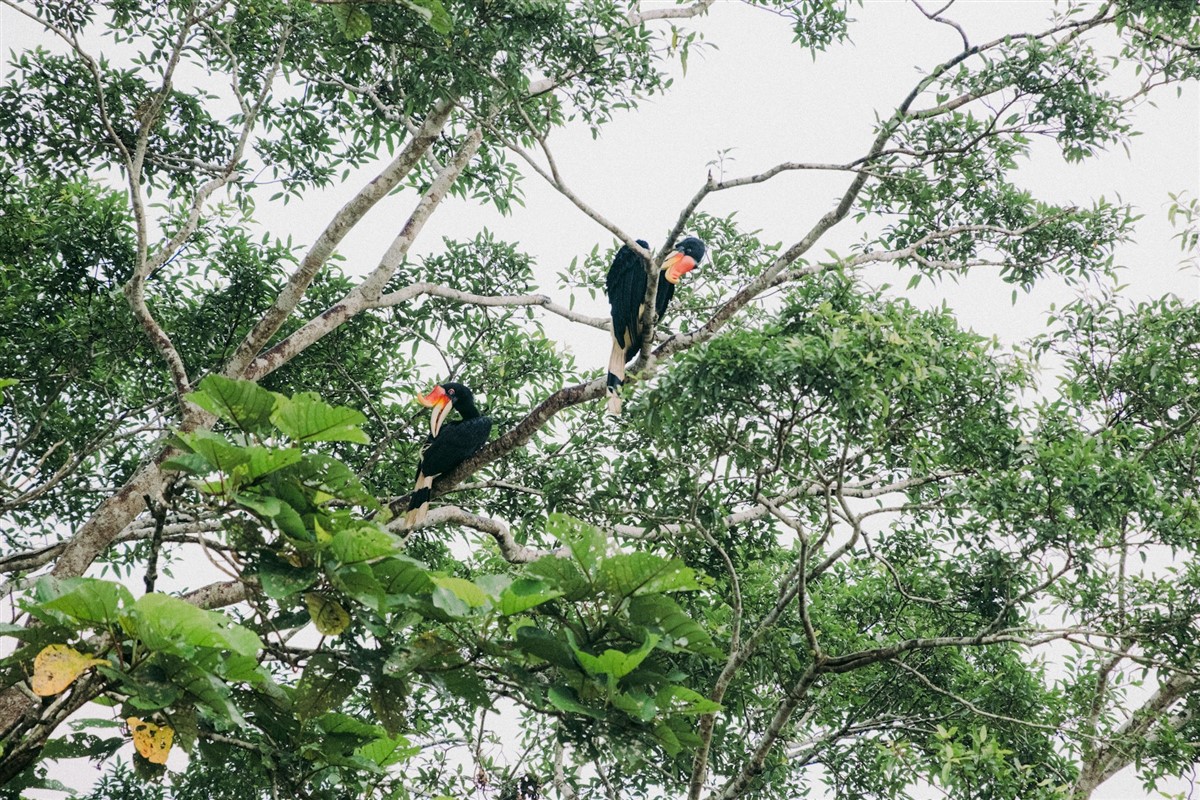 Spend the next two days further exploring the waterways around Abai in search of wildlife or simply enjoying a relaxed morning. Later, cruise upriver to the village of Sukau, where the quiet waters give way to busier tributaries and abundant wildlife. This area is one of the best spots for wildlife, including Borneo’s famous orangutans.
Spend the next two days further exploring the waterways around Abai in search of wildlife or simply enjoying a relaxed morning. Later, cruise upriver to the village of Sukau, where the quiet waters give way to busier tributaries and abundant wildlife. This area is one of the best spots for wildlife, including Borneo’s famous orangutans.
The following morning, head out from Sukau to Batu Puteh village and the KOPEL reception center, a community-based ecotourism cooperative. Meet your guide and take a river cruise to the project’s current tree planting site, where you can help plant saplings and learn about rainforest conservation efforts.
Afterward, enjoy a simple lunch at the Riverside Café and visit the nearby Batu Tulug Cave, an ancient burial site of the Orang Sungai community.
Accommodation: Kinabatangan Riverside Lodge, Kinabatangan River.
DAY 6-7: Danum Valley
 Depart in the morning for Lahad Datu, near Danum Valley. This 170-square-mile reserve protects a section of Borneo’s 130-million-year-old rainforest, home to a staggering 8.8 million plant species.
Depart in the morning for Lahad Datu, near Danum Valley. This 170-square-mile reserve protects a section of Borneo’s 130-million-year-old rainforest, home to a staggering 8.8 million plant species.
The reserve is a haven for diverse wildlife, including rare species such as orangutans, Bornean pygmy elephants, Spectacled Flowerpeckers, and sun bears. The park’s tree nursery actively works to repopulate the forest and protect existing trees.
You’ll stay at the Borneo Rainforest Lodge, located deep in the jungle, offering prime opportunities to spot gibbons, proboscis monkeys, and orangutans.
Engage in activities like night drives or walks to spot nocturnal animals, visit the canopy walk at sunrise, trek to a nearby waterfall, or simply relax at your chalet and let the wildlife come to you.
Accommodations: Borneo Rainforest Lodge, Danum Valley.
DAY 8-10: Gaya Island
 Fly from Lahad Datu to Kota Kinabalu, where you’ll be transferred to the jetty for a boat ride to Gaya Island. Located within the Tunku Abdul Rahman Marine Park, Gaya Island boasts 19 square miles of protected ocean, supporting diverse coral reefs and marine species.
Fly from Lahad Datu to Kota Kinabalu, where you’ll be transferred to the jetty for a boat ride to Gaya Island. Located within the Tunku Abdul Rahman Marine Park, Gaya Island boasts 19 square miles of protected ocean, supporting diverse coral reefs and marine species.
The island’s tropical environment is home to birds, mammals, and reptiles. Enjoy snorkeling in the warm South China Sea, island-hopping, or exploring nature trails through the jungle.
Gaya’s beaches are among the best in Borneo, providing a perfect setting for relaxation and adventure.
Accommodation: Bunga Raya, Kota Kinabalu and beyond.
DAY 11: Departure
Enjoy a leisurely day until your transfer to the mainland, followed by a trip to the airport in time for your departure flight home.
Price Guide
- Per person sharing from £4,309
- This trip starts in Sandakan and finishes in Kota Kinabalu.
Includes
- English speaking, local guide
- All accommodation listed
- Transfers as listed
- All admission fees at attractions, temples and activities as mentioned in the itinerary
- Meals as listed
International Flights Our partners can book International Flights for you as required.
MALAYSIAN BORNEO GUIDE
You’ll find a short guide to Malaysian Borneo below.
To start planning a trip to Kenya please contact us via the Enquiry Form, by email on info@realworldconservation.org.uk or on 01692 218189.
 The expansive Danum Valley Conservation Area stands as one of Borneo’s most remarkable and untouched rainforests. This ancient forest, approximately 130 million years old, boasts an extraordinary ecological richness. It is estimated that each hectare of this pristine area is home to around 200 plant species, making it a botanical treasure trove.
The expansive Danum Valley Conservation Area stands as one of Borneo’s most remarkable and untouched rainforests. This ancient forest, approximately 130 million years old, boasts an extraordinary ecological richness. It is estimated that each hectare of this pristine area is home to around 200 plant species, making it a botanical treasure trove.
The Danum Valley is renowned for its incredible biodiversity, providing sanctuary to a wide array of wildlife, including several rare and endangered species. Among its notable inhabitants are the iconic orangutan, known for its intelligence and arboreal lifestyle. The forest also shelters the elusive Bornean Pygmy Elephant, the smallest elephant species in the world, characterized by its smaller size and baby-faced appearance.
Bird enthusiasts will find the Danum Valley particularly fascinating, as it is home to the Spectacled Flowerpecker, a bird so rare that it was only recently discovered and remains one of the least known bird species in the world. Additionally, the sun bear, the smallest of the bear species and recognizable by the distinctive, golden crescent shape on its chest, roams these forests.
Visitors to the Danum Valley can experience the rainforest’s wonders through guided treks, where they might encounter other unique wildlife such as the clouded leopard, red leaf monkey, and various hornbill species. The area also supports a plethora of insects, reptiles, and amphibians, each contributing to the complex and vibrant ecosystem.
The conservation efforts in the Danum Valley are crucial, as they not only aim to protect these magnificent species but also to maintain the integrity of one of the oldest rainforests on the planet. The research and preservation activities carried out here are vital for understanding and safeguarding the biodiversity of Borneo, ensuring that future generations can continue to marvel at this natural wonder.
 The Kinabatangan River, the longest river in Sabah, is celebrated for its densely forested banks, which host the highest concentration of primates in northern Borneo. Stretching across the northeastern tip of Borneo, the river meanders through a variety of habitats, including freshwater swamp forests, lowland rainforests, mangroves, and oxbow lakes. This diversity of ecosystems supports a rich array of flora and fauna, creating a vibrant corridor of life along its banks.
The Kinabatangan River, the longest river in Sabah, is celebrated for its densely forested banks, which host the highest concentration of primates in northern Borneo. Stretching across the northeastern tip of Borneo, the river meanders through a variety of habitats, including freshwater swamp forests, lowland rainforests, mangroves, and oxbow lakes. This diversity of ecosystems supports a rich array of flora and fauna, creating a vibrant corridor of life along its banks.
The extensive network of the Kinabatangan River allows for easy exploration and offers numerous opportunities for wildlife observation. Along its banks, you can quietly view orangutans, pygmy elephants, proboscis monkeys, and various langur subspecies. The river is also home to the elusive Sumatran rhinoceros and the rare Borneo river shark, among hundreds of other fascinating species. Bird watchers will be delighted by the presence of hornbills, kingfishers, and a multitude of other avian species.
River safaris in the Lower Kinabatangan Segama Wetlands provide visitors with a serene and less crowded experience compared to the more popular upriver areas such as Sukau. At the heart of this tranquil region is the village of Abai, inhabited by the Orang Sungai (‘people of the river’), an indigenous community deeply connected to the river. The community relies on river fishing, locally grown produce, rainwater harvesting, and solar energy for their sustenance. They also collaborate closely with local lodges, employing local staff and using regional produce whenever possible.
Abai’s peaceful waters lead to the busier tributaries and wildlife-rich areas of Sukau. While Sukau experiences more visitor traffic, it remains one of the best spots in the region for wildlife viewing, particularly for sightings of Borneo’s famous orangutans. The increased activity in this part of the river is justified by the exceptional opportunities to observe these incredible creatures and other wildlife in their natural habitat.
Whether you choose the quietude of Abai or the bustling biodiversity of Sukau, the Kinabatangan River offers a unique and immersive experience into the heart of Borneo’s wilderness. Exploring this river provides a glimpse into the rich tapestry of life that thrives along its banks and underscores the importance of conservation efforts in preserving this remarkable ecosystem.
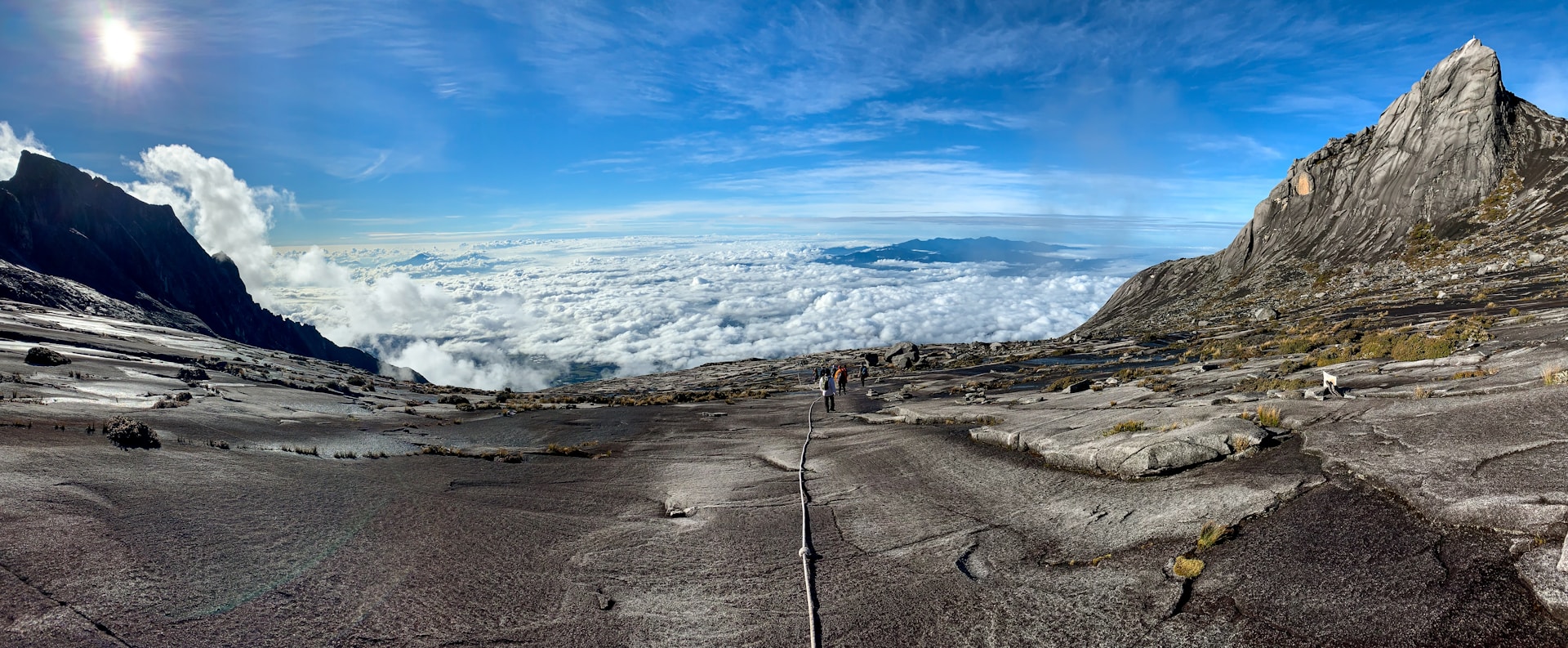 If you’re traveling in Borneo, chances are you’ll pass through Kota Kinabalu, often referred to as KK, at some point. Whether you’re arriving or departing from the Jesselton Point jetty to Gaya Island just off the coast, KK serves as a gateway to your Bornean adventure.
If you’re traveling in Borneo, chances are you’ll pass through Kota Kinabalu, often referred to as KK, at some point. Whether you’re arriving or departing from the Jesselton Point jetty to Gaya Island just off the coast, KK serves as a gateway to your Bornean adventure.
Originally a small fishing village, Kota Kinabalu has transformed into the bustling capital of Sabah. The city offers a range of luxury hotels, shopping centers, and vibrant nightlife. However, most visitors find themselves merely passing through, en route to the rainforest or the pristine beaches that Sabah is famous for.
Mount Kinabalu
The journey to Mount Kinabalu begins amidst the hot and humid air of the lowland conifer, giant fern, and rhododendron forests at the mountain’s base. As you ascend, well-worn stone steps and sturdy wooden handrails provide a gentle introduction to the climb. Your guide may share local legends and stories while you catch your breath and enjoy a box of super-sweet Suka cookies. Despite it being early in the day, your legs will feel the challenge of the ascent. As you climb higher, you cross alpine meadows, leading to your overnight accommodation near the summit. The real magic happens at 2 am when you resume your hike to catch the breathtaking sunrise, watching the first rays transform the jungle canopy into a golden spectacle. This is the essence of hiking Mount Kinabalu: witnessing the dawn light up the world from the island’s highest peak.
Tunku Abdul Rahman Marine Park
Experiencing Tunku Abdul Rahman Marine Park is best done by skipping over the South China Sea in a speedboat, where the brilliant blues of the water contrast with the white sandy beaches and lush green forests of the tropical islands. From afar, the islands appear as green gems surrounded by turquoise waters. As you approach, you’ll notice signs of wildlife, with birds darting from cliff faces and mysterious caves hinting at hidden depths.
Anchor in a secluded cove for a packed lunch or find a local spot equipped with barbecue pits and picnic tables for added comfort. On these islands, you can explore both land and sea, guided by rangers who know the best spots for vibrant coral gardens and the finest beaches for snorkeling. Whether you’re marveling at the underwater wonders or enjoying a quiet picnic on the sand, Tunku Abdul Rahman Marine Park offers a serene escape into nature.
Kota Kinabalu is more than just a transit point; it’s the starting line for incredible adventures. From scaling the heights of Mount Kinabalu to exploring the underwater paradise of Tunku Abdul Rahman Marine Park, KK serves as the perfect hub for experiencing the diverse beauty and excitement of Borneo. Whether you’re hiking through ancient forests, watching a golden sunrise, or snorkeling among vibrant corals, the experiences awaiting you in and around Kota Kinabalu are unforgettable.
 Sandakan, situated on the northeast coast of Sabah, Malaysia, is the second-largest city in the state, following Kota Kinabalu. Known as a gateway to Sabah’s ecotourism destinations, Sandakan offers access to some of the region’s most renowned attractions, including the famous Sepilok Orangutan Rehabilitation Centre.
Sandakan, situated on the northeast coast of Sabah, Malaysia, is the second-largest city in the state, following Kota Kinabalu. Known as a gateway to Sabah’s ecotourism destinations, Sandakan offers access to some of the region’s most renowned attractions, including the famous Sepilok Orangutan Rehabilitation Centre.
Sepilok: A Haven for Wildlife
Located just a 30-minute drive from Sandakan, the Sepilok area is a sanctuary of protected primary rainforest and mangroves. The region is best known for the Sepilok Orangutan Rehabilitation Centre and Nursery, where visitors can observe orangutans in their natural habitat and learn about conservation efforts aimed at rehabilitating these magnificent creatures.
Sun Bear Conservation Centre & Rainforest Rehabilitation Project
Beyond the orangutans, Sepilok is home to the Bornean Sun Bear Conservation Centre. This facility is dedicated to the rescue and rehabilitation of sun bears, the smallest bear species in the world. The centre provides educational exhibits and opportunities to see these unique animals up close.
Rainforest Discovery Centre (RDC)
The Rainforest Discovery Centre (RDC) is another must-visit destination in Sepilok. Located near the Kabili-Sepilok Forest Reserve, the RDC features an extensive network of forest trails and a remarkable canopy walkway that offers a bird’s-eye view of the lush rainforest below. The centre also organizes dusk visits, allowing guests to experience the nocturnal side of the forest and observe a different array of wildlife, including flying squirrels and various bird species.
Bespoke Ecotourism Programs
Sandakan and the surrounding Sepilok region offer numerous bespoke ecotourism programs designed to engage and educate visitors. These programs can include guided treks through the rainforest, bird watching tours, and conservation workshops. Whether you’re interested in wildlife photography, learning about the local flora and fauna, or participating in conservation efforts, there are activities tailored to enhance your travel experience in this remarkable part of Borneo.
Sandakan serves as a vital hub for exploring the natural wonders of Sabah. From the captivating orangutans at the Sepilok Rehabilitation Centre to the diverse wildlife at the Sun Bear Conservation Centre and the Rainforest Discovery Centre, visitors are immersed in the beauty and complexity of Borneo’s ecosystems. With a range of engaging programs and activities, Sandakan promises an enriching and unforgettable journey into the heart of Sabah’s natural heritage.

 Established in 1984, the Tabin Wildlife Reserve spans over 1,200 square kilometers of lowland rainforest, providing a haven for an incredible diversity of wildlife. This protected area is home to some of the world’s most endangered species, including the Bornean pygmy elephant, Sunda clouded leopard, and banteng, a type of large-horned cattle. The reserve also hosts nine species of primates, such as orangutans and proboscis monkeys, along with over 220 species of birds, making it a biodiversity hotspot.
Established in 1984, the Tabin Wildlife Reserve spans over 1,200 square kilometers of lowland rainforest, providing a haven for an incredible diversity of wildlife. This protected area is home to some of the world’s most endangered species, including the Bornean pygmy elephant, Sunda clouded leopard, and banteng, a type of large-horned cattle. The reserve also hosts nine species of primates, such as orangutans and proboscis monkeys, along with over 220 species of birds, making it a biodiversity hotspot.
Unique Features and Wildlife
The Tabin Wildlife Reserve is renowned for its active, mineral-rich mud volcanoes. Unlike typical volcanoes, these small, flat structures expel hot mud rather than lava. The mineral content of the mud is crucial for the local wildlife, who use these mud volcanoes as natural salt-licks. These areas are excellent spots for wildlife sightings, as animals frequently visit to obtain essential minerals.
Endangered Species
The reserve’s dense rainforests are a sanctuary for highly endangered species. The Bornean pygmy elephant, the smallest elephant species in the world, roams these forests. The elusive Sunda clouded leopard, known for its striking coat and reclusive nature, also inhabits this area. The banteng, a rare and majestic large-horned cattle, can be found here as well. Additionally, visitors might encounter various primate species, including the intelligent and arboreal orangutans and the uniquely featured proboscis monkeys.
Birdwatching Paradise
With over 220 species of birds, Tabin is a paradise for birdwatchers. The lush forest canopy and diverse habitats attract a wide array of birdlife, from colorful hornbills and kingfishers to the rare and elusive Bornean ground cuckoo. Bird enthusiasts can explore the reserve’s trails and vantage points to spot these incredible creatures in their natural environment.
Exploring Tabin
Visitors to Tabin Wildlife Reserve can embark on guided treks and safaris to explore the rich biodiversity of the area. Day and night excursions offer opportunities to see the reserve’s wildlife in different settings. The active mud volcanoes are a highlight, providing unique chances to observe animals drawn to the mineral-rich mud. Additionally, Tabin’s diverse ecosystems, including rivers, waterfalls, and dense jungle, offer stunning scenery and numerous spots for nature photography.
Conservation and Research
Tabin Wildlife Reserve plays a crucial role in the conservation of Borneo’s unique flora and fauna. The reserve is a site for ongoing research and conservation efforts aimed at protecting endangered species and preserving their habitats. Educational programs and initiatives help raise awareness about the importance of conservation and sustainable practices.
The Tabin Wildlife Reserve is a vital sanctuary for some of Borneo’s most endangered and remarkable species. From the mineral-rich mud volcanoes to the diverse array of wildlife, including pygmy elephants, clouded leopards, and a plethora of bird species, Tabin offers an unparalleled glimpse into the natural wonders of Sabah. Whether you’re a wildlife enthusiast, a birdwatcher, or simply a nature lover, Tabin promises an unforgettable experience in the heart of Borneo’s pristine wilderness.
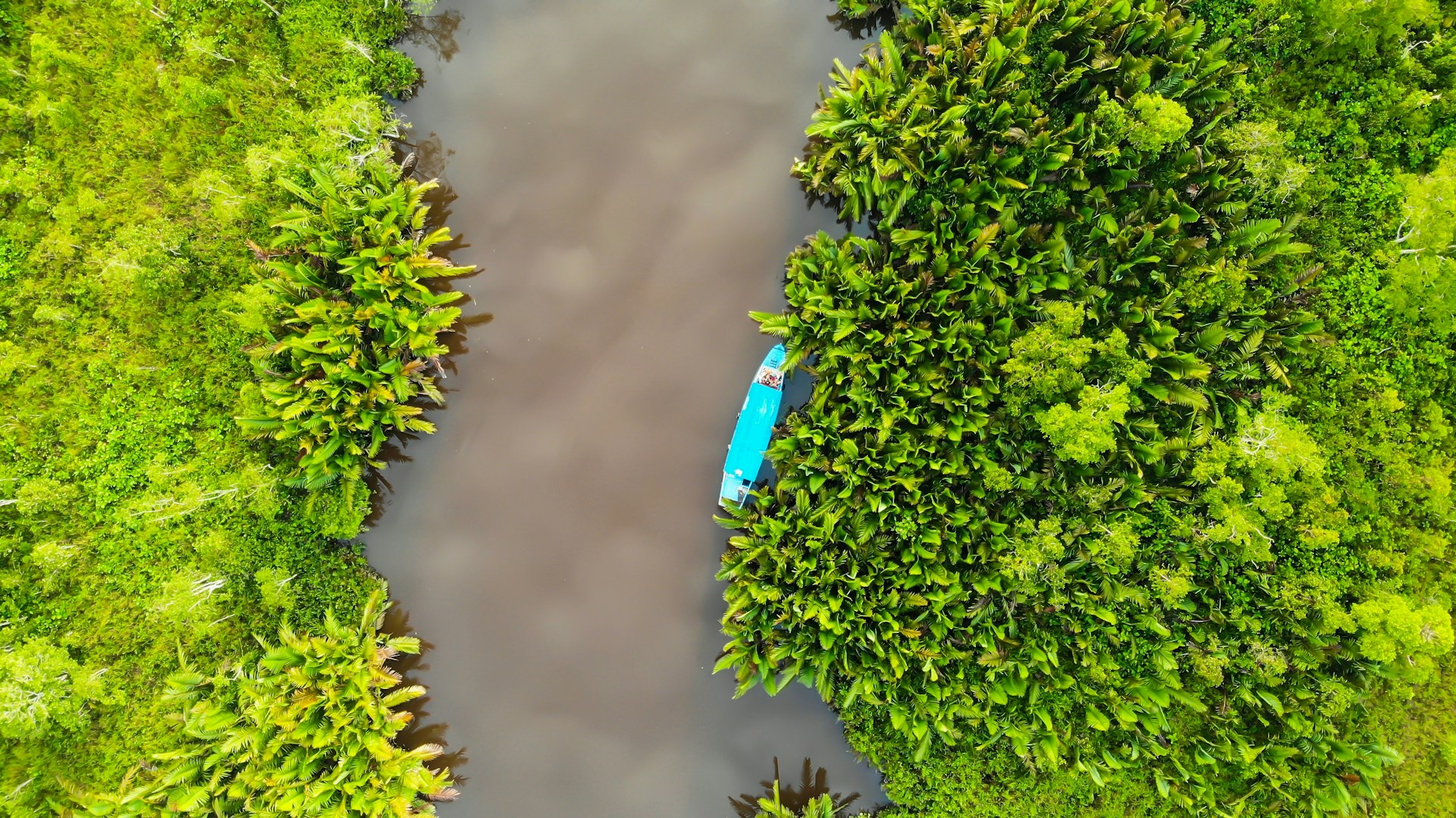 Malaysia, encompassing both the mainland peninsula and the northern regions of Borneo, is one of the most biodiverse areas on earth. It hosts an astonishing variety of flora and fauna, including 361 species of mammals, over 350 types of birds, and an incredible diversity of sea life in its coastal waters.
Malaysia, encompassing both the mainland peninsula and the northern regions of Borneo, is one of the most biodiverse areas on earth. It hosts an astonishing variety of flora and fauna, including 361 species of mammals, over 350 types of birds, and an incredible diversity of sea life in its coastal waters.
Conservation Challenges
Several of Malaysia’s larger mammals are on the brink of extinction, primarily due to habitat loss and hunting driven by the demand for traditional Chinese medicine. However, national parks and protected conservation zones provide safe havens for many of these endangered species.
Wildlife on the Mainland Peninsula
Big Cats
Malaysia’s mainland is home to the critically endangered Malayan tiger, with only about 250 individuals remaining. The Indochinese tiger might still inhabit the far north, though it is largely considered extinct in the region. Additionally, Indochinese leopards and clouded leopards are part of the mainland’s diverse predator population.
Other Mammals
The forests of the peninsula still support populations of sun bears, tapirs, wild boars, and several species of deer. A small population of Asian elephants, estimated at around 1,200 individuals, continues to roam the peninsula.
Wildlife in Borneo
The fauna of Borneo differs slightly from that of the mainland. Key predators include clouded leopards and sun bears. Borneo also supports a population of elephants and various species of civets. Sadly, the Bornean rhinoceros has been declared extinct due to poaching and habitat loss. Borneo is particularly famous for its primates, most notably the critically endangered orangutan. Habitat destruction from palm oil plantations, along with hunting and the illegal pet trade, are the primary threats to these iconic animals.
Conservation Efforts
Malaysia is committed to protecting its stunning natural habitats. The country has established more than 25 protected areas and over 40 marine parks. On the mainland, Taman Negara National Park stands out, covering over one million acres of the world’s oldest primary rainforest. This park is an essential highlight for visitors to the east coast.
In Borneo, numerous reserves offer exploration opportunities, many accessible only by water. For adventurous travelers, climbing Mount Kinabalu, surrounded by its own national park, combines wildlife observation with spectacular trekking.
Marine and Coastal Biodiversity
Malaysia’s coastal waters are equally rich in biodiversity, with marine parks playing a crucial role in protecting coral reefs and sea life. The marine parks offer snorkeling and diving opportunities where visitors can encounter vibrant coral gardens, sea turtles, and a multitude of fish species.
Malaysia’s diverse ecosystems, from its ancient rainforests to its vibrant coral reefs, offer an unparalleled experience for nature enthusiasts. The country’s ongoing conservation efforts are vital for preserving these unique habitats and the incredible wildlife that inhabits them. Whether exploring the dense jungles of Taman Negara, trekking up Mount Kinabalu, or diving in the crystal-clear waters of a marine park, Malaysia promises an unforgettable journey into the heart of nature.


